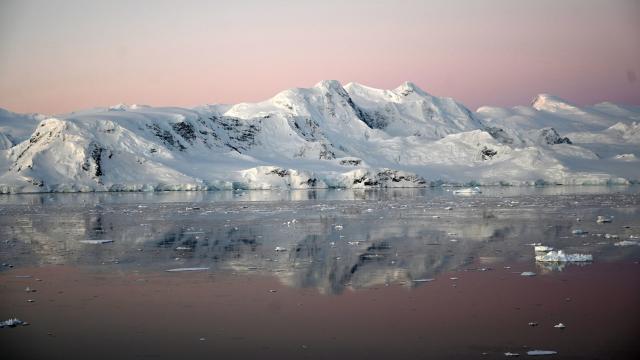The world’s glaciers are melting faster and the climate crisis is to blame, a new study shows.
For a comprehensive new study, published in Nature on Wednesday, scientists analysed half a million recently declassified 3D satellite images. The images span nearly two decades and 217,175 mountain glaciers, or nearly every single one on Earth. The imagery came from the Terra satellite, which NASA launched in 1999.
The authors calculated that these glaciers lost nearly 298 billion tons of mass on average per year since the start of the 21st century. And things are only getting worse: Since 2015, they’ve lost an average of more than 328 billion tons annually, a 31% increase compared to 15 years ago. This is the first-ever analysis to use 3D satellite imagery to analyse all of the world’s glaciers, not just those connected to ice sheets in Greenland and Antarctic. The imagery used was also extremely high resolution, which allowed the team to paint a clear picture and present their findings with a 95% confidence level.
The quickening disappearance of the world’s glaciers isn’t just sad because they’re beautiful — which they are — or because complex ecosystems rely on them — which they do. It also spells disaster for communities who depend on them to live. Greenland, for instance, is home to some 56,000 people — most of whom are Indigenous — who depend on the ice for travel and hunting. As glaciers melt out, it could impact their way of life. Sometimes the threat can be even more acute; a glacier collapse earlier this year in the Himalayas unleashed a deadly flood. Of course, glacial melt everywhere is bad for those of us who live far away from them, too, because it contributes to sea level rise that threatens coastal communities.
The new study notes that “the acceleration of sea-level rise since 2000 [is] often attributed to the accelerated loss from both the Greenland ice sheet and Antarctic ice sheet.” But they found that glacial melt is also an important factor: Since 2000, the water from melting glaciers accounted for 21% of global sea level rise.
The study says that glaciers in the northern hemisphere are melting the fastest. In fact, those in the U.S. and Canada “are responsible for nearly 50%” of the glacial melt the world has seen since 2015. But nearly all the world’s glaciers are melting, even ones in Tibet that were, until this study, thought to be fairly stable. There are exceptions — notably a few in Iceland and Scandinavia are gaining back their losses due to increased snowfall. But overall, this is a global problem because temperatures are rising nearly everywhere, especially because the coldest parts of the planet are among the fastest-warming locations.
The study comes just weeks after groundbreaking research found that the Antarctic Thwaites Glacier, which is often also called the “doomsday glacier,” is even more unstable than previously thought. Findings published last week, meanwhile, show how ice’s disappearance has contributed to knocking the Earth off its axis. It seems there’s no shortage of bad news about ice loss or its impact on the planet. Though their findings are bleak, the authors hope they will contribute to the scientific understanding of how glaciers melt over time, allowing scientists to improve their models and informing policy decisions of how to manage the coming changes.
